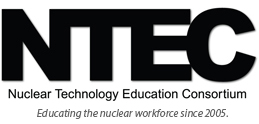N03: Radiation and Radiological Protection
This unit aims to:
- Explain the different types of radiation occurring as a result of a nuclear process.
- Identify means whereby levels of radiation and dosage can be detected and measured.
- Give practical experience in the use of nuclear radiation detectors.
- Outline the principles of radiation protection and design of shielding and containment facilities.
- Overview of regulations and legislation governing the impact of radiation on people and the environment.
Brief description of the unit
The unit examines different types of radiation that occur in the nuclear process, means whereby these types are measured, protection of personnel and the environment, and regulations regarding the implementation of measurement and protection measures. The topics covered include: different types of radiation; assessment of radiation/calculations; dosimetry including external & internal dosage; collective dose studies, use and misuse; ionising radiations regulations; radiological protection; shielding design/material properties; containment systems; environmental impact modelling; dispersion; and biological effects of radiation.
Intended Learning Outcomes
| Analyse different types of sources and radiation and evaluate the hazards associated with nuclear processes. |
| Apply the basic principles that govern the design and construction of radiological protection and containment equipment. |
| Operate nuclear radiation detectors and interpret data collected from alpha, beta, gamma and neutron sources. |
| Apply the key principles and display an awareness of the legislative/regulatory instruments applicable to the complete nuclear process |
